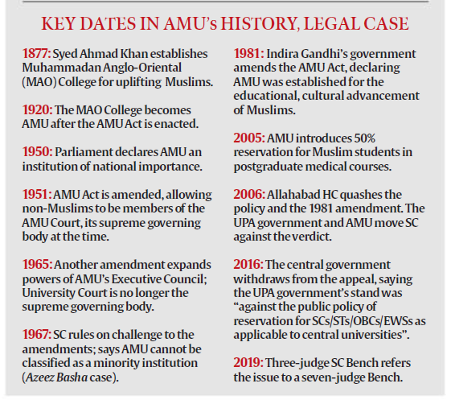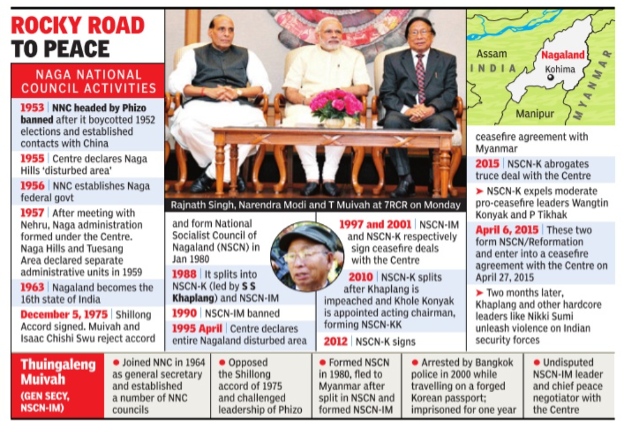9 November 2024 : Daily Current Affairs
1. Caught In The Cross FIRE
(Source – The Hindu, International Edition – Page No. – 8)
| Context |
|
Overview of Stubble Burning
- Every winter, Punjab and Haryana experience extensive stubble burning, especially in paddy fields.
- This practice worsens air quality, particularly in Delhi, contributing up to 50% of its pollution during the paddy harvesting season.
- The phenomenon is worsened by cold, still air that traps pollutants, creating a thick, grey haze.
Impact on Local Villages and North India
- Local residents, including farmers, face respiratory issues due to smoke inhalation.
- The AQI in the national capital recently spiked to levels exceeding 300, classified as ‘very poor.’
- The air quality index (AQI) in regions close to Punjab, such as Patiala, frequently reaches unhealthy levels, often higher than in Delhi.
- Stubble burning affects not only India but has also been reported to impact air quality across the border in Pakistan.
Reasons for Continued Stubble Burning
- Farmers cite a lack of viable alternatives and support, stating that without direct compensation, they are left with no cost-effective options.
- A central government scheme offers subsidies for machines to manage crop residue, but many farmers find it unaffordable or impractical.
- The delay in paddy procurement has further shrunk the already tight timeframe between paddy harvest and wheat sowing.
Government Interventions and Schemes
- In 2018, the central government introduced subsidies for crop residue management (CRM) machinery, but these have not solved the issue completely.
- Machines include super-seeders (which plough stubble back into the soil) and balers (which collect stubble for use as fuel).
- Machines require powerful tractors, which many small farmers do not own, making the equipment inaccessible to them.
Incentives vs Coercive Measures
- Punjab has requested a direct incentive of ₹2,500 per acre to help farmers manage stubble, but the central government has not agreed.
- While the state governments have taken some actions, including fines and FIRs, farmer protests have often led to the withdrawal of these penalties.
- In Haryana, a scheme offers ₹1,000 per acre to farmers who avoid burning stubble, resulting in reduced farm fires compared to Punjab.
Environmental and Health Impact
- Delhi’s levels of PM2.5 particles are over ten times the World Health Organization’s safe limit during this season.
- Long-term exposure to PM2.5 particles can lead to severe health issues such as lung disease, stroke, and cancer.
The Root Cause: Paddy as a Crop Choice
- The push for paddy cultivation in Punjab, initially encouraged by the Green Revolution, is one of the core issues.
- Paddy cultivation requires significant water resources, straining Punjab’s groundwater and creating large amounts of stubble.
- Mechanisation has left longer stubble in the fields, making burning a convenient option for farmers with limited alternatives.
Crop Diversification as a Long-Term Solution
- Experts suggest crop diversification, shifting from water-intensive paddy to other crops like sugarcane, as a potential solution.
- Farmers in Punjab report difficulties with alternative crops due to low procurement rates and delayed payments from buyers.
- The absence of government-backed MSP for crops other than paddy discourages farmers from diversifying their crop choices.
Conclusion
- Stubble burning remains a complex issue, with economic, environmental, and social factors intertwined.
- Current policies and machinery subsidies have not adequately addressed the problem.
- A holistic approach, including financial incentives, crop diversification, and support for alternative crop markets, is essential to curb stubble burning in the region effectively.
| PYQ: Mumbai, Delhi and Kolkata are the three megacities of the country but the air pollution is a much more serious problem in Delhi as compared to the other two. Why is this so? (200 words/12.5m) (UPSC CSE (M) GS-1 2015) |
| Practice Question: Examine the economic and environmental challenges associated with stubble burning in North India. Discuss the effectiveness of government interventions and suggest alternative strategies to mitigate its impact. (250 Words /15 marks) |
2. Tea industry calls for scientific quality grading
(Source – The Hindu, International Edition – Page No. – 11)
| Topic: GS3 – Agriculture |
| Context |
|
Introduction of Quality Grading System
- The Indian Tea Association (ITA) has proposed the introduction of a statutory scientific quality grading system to improve market competitiveness and consumer trust in the Indian tea industry.
- The system would assign grading marks ranging from one leaf to five leaves on tea retail packets, providing a standard measure of quality.
Emphasis on Quality and Compliance
- The ITA has highlighted the importance of ensuring safe tea consumption through rigorous adherence to maximum residue limits (MRL) for pesticides.
- The Food Safety and Standards Authority of India (FSSAI) has set specific MRLs for pesticides in tea, and the industry is committed to meeting these safety standards.
- These efforts are intended to enhance the brand equity of Indian teas and ensure the safety of the product for consumers.
Challenges Faced by the Tea Industry
- The tea industry is grappling with several challenges, including rising production costs, unremunerative prices, and adverse weather conditions in Assam and Bengal.
- These issues are further intensifying the difficulties faced by the industry.
| Tea Industry In India: |
Challenges Faced:
Way Forward And Steps Taken:
|
| Practice Question: Critically examine the challenges faced by the Indian tea industry and discuss the significance of introducing a quality grading system to address these issues. (150 Words /10 marks) |
3. Supreme Court Clears Path for AMU’s Minority Status with New Criteria for Educational Institutions
(Source: Indian Express; Section: Explained: 13)
| Topic: GS2 – Polity |
| Context: |
|
Analysis of News:
Background of the Case

- In S. Azeez Basha v Union of India (1967), the Supreme Court held that AMU was neither established nor administered by Muslims, disqualifying it as a minority institution under Article 30.
- The AMU Act was amended in 1981 to assert that AMU was founded by Muslims, aiming to advance their educational interests.
- However, the Allahabad High Court struck down this amendment in 2006, ruling that AMU was not a minority institution. The Supreme Court subsequently referred the matter to a seven-judge Bench.
Constitutional Protections for Minority Educational Institutions (MEIs)
- Under Article 30(1), minorities can establish and administer educational institutions of their choice.
- Article 15(5) exempts MEIs from providing reservations for SCs/STs. This autonomy extends to aspects like student admissions, allowing up to 50% seats reserved for minority students, and staff hiring.
Core Essentials of Minority Character
Chief Justice D.Y. Chandrachud and the majority outlined several criteria for minority character:
- Minority institutions should aim to conserve the community’s language and culture, though it need not be their sole purpose.
- Admitting non-minority students does not alter an institution’s minority character.
- Secular education can be imparted without affecting minority status.
- Government-aided institutions cannot mandate religious instruction, though MEI status remains.
Test for Determining Minority Character
The Supreme Court prescribed a two-fold test:
- Establishment: Courts should analyze the institution’s origins, the community’s intent in founding it, and the means of establishment (funding, land, permissions). For AMU, it was argued that the Muslim community’s efforts led to its founding, though the government contended that Western education promotion was central.
- Administration: The court noted that minority community members do not need exclusive administrative control; however, the administrative setup should reflect minority interests. Courts should consider the institution’s administration at the Constitution’s commencement to assess if its minority character was maintained.
Conclusion
- The verdict has established a more inclusive interpretation of Article 30, emphasizing both historical intent and functional autonomy.
- The application of these principles by a smaller Bench will decisively determine AMU’s status as a minority institution.
| What are Constitutional and Statutory Provisions Regarding Minority Communities? |
Article 30 (1) of the Constitution empowers all religious and linguistic minorities to establish and administer educational institutions.
|
| PYQ: Whether National Commission for Scheduled Castes (NCSCJ) can enforce the implementation of constitutional reservation for the Scheduled Castes in the religious minority institutions? Examine. (150 words/10m) (UPSC CSE (M) GS-2 2018) |
| Practice Question: Critically analyze the implications of the Supreme Court’s new criteria for determining the minority status of educational institutions in India. How does this affect the administration and constitutional protections of institutions like Aligarh Muslim University? (250 words/15 m) |
PRELIMS FACTS
1. NSCN-IM Warns of Renewed Armed Resistance, Calls for Third-Party Mediation Over Stalled Naga Accord
(Source: Indian Express; Section: Govt & Politics; Page: 07)
| Context: |
|
Analysis of News:

Naga Insurgency
- Background:
- The Naga National Council (NNC) was formed in April 1946 to carry out social and political upliftment of the Nagas.
- After the return of the radical leader of Naga cause, Angami Zapu Phizo, from Burma in 1947, the faction of NNC demanding full impendence grew strong.
- Shillong Accord and the split of NNC
- The Shillong Accord was signed in 1975 by Government of India with a section of the NNC leaders.
- As part of the accord, the leaders agreed to abjure violence and work towards the solution of the Naga problem within the framework of the Indian Constitution.
- It was opposed by Phizo, Isak Swu and Muivah. Later, Isak Swu and Muivah formed the “National Socialist Council of Nagaland (NSCN)” in January 1980.
- Later, NSCN split into two factions, namely NCSN (I-M) led by Isak & Muivah and NCSN (K) led by Khaplang.
- Demand for Greater Nagaland
- The NSCN-IM, has been demanding:
- ‘Greater Nagaland,’ an extension of Nagaland’s borders by including Naga-dominated areas in neighbouring Assam, Manipur and Arunachal Pradesh, to unite more than 1.2 million Nagas,
- a separate flag and
- a constitution.
- Naga Peace Accord
- Since 1997, NSCN (I-M) has been involved in negotiations with the Government of India and signed many ceasefire agreements.
- 2015 Framework Agreement (FA)
- On August 3, 2015, the Centre signed a framework agreement with the NSCN (I-M) to resolve the Naga issue.
- The agreement was only a framework, with many details still to be hammered out.
- Talks were being held regularly to chart out the finer details of the FA.
- In June 2022, talks broke down after the NSCN accused the interlocuter appointed by the Centre of excluding three political points.
Stalled Negotiations and Discontent
- The recent ultimatum follows several rounds of discussions between NSCN-IM leaders and the Centre’s interlocutor, A.K. Mishra.
- Meanwhile, the government has been holding separate talks with the NNPGs, another Naga organization umbrella group, which signed a separate “Agreed Position” with the Centre in 2017.
Parallel Agreements and Persistent Deadlock
- Despite signing the 2015 Framework Agreement, no comprehensive accord has been achieved with the NSCN-IM.
- The Centre’s simultaneous negotiations with the NNPGs and a 2017 agreement have added complexity, leaving the peace process in a prolonged deadlock.





